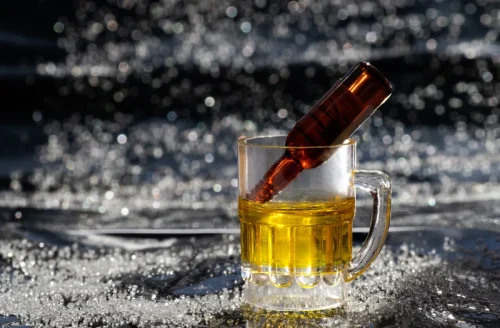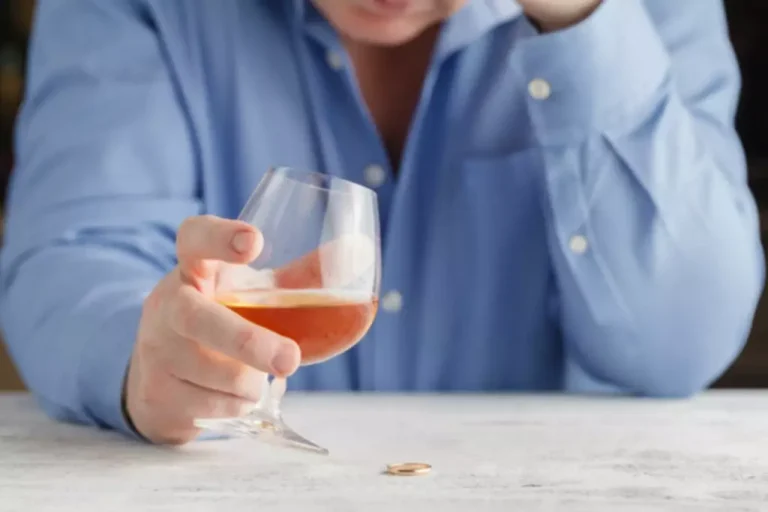
In addition, fast dopamine release events (dopamine transients) commence at the onset of a conditioned cue [18, 19]. Pavlovian conditioned responses to alcohol cues in rodents provide a model of alcohol AB that allows direct measurements and mechanistic manipulations of the neural circuitry underlying AB [20,21,22]. Taken together, https://ecosoberhouse.com/ preclinical evidence indicates a key role for dopaminergic pathways in mediating responses to alcohol-related cues [23,24,25]. Moreover, work in non-human primates highlights a role for the prefrontal cortex in reward signaling [26], and human fMRI studies show that prefrontal cortex drives phasic cue responses in the VTA [27, 28].
ReviewAlcohol and the Brain: Neuronal Molecular Targets, Synapses, and Circuits

Into Action is an addiction treatment center specializing in personalized treatment for drug and alcohol abuse, conveniently located in Houston, Texas and led by experienced master’s level counselors and medical professionals. However, when it comes to dopamine levels and addictive substances, alcohol behaves somewhat differently than other substances or pharmaceuticals. This circuit registers an intense experience (such as getting high) as “important” and creates lasting memories of it as pleasurable. Dopamine changes the brain on a cellular level, commanding the brain to do it again. Dopamine is known as the feel-good neurotransmitter—a chemical that ferries information between neurons. The brain releases it when we eat food that we crave or while we have sex, contributing to feelings of pleasure and satisfaction as part of the reward system.
This is your brain on alcohol
Moreover, SSRI’s and receptor antagonists can reduce alcohol consumption in humans and animals, although these agents are only moderately effective in treating alcohol abuse. Countless human and rodent studies have explored the relationship between the dopaminergic signaling and alcohol abuse with evidence amassed from anatomical, physiological, pharmacologic, genetic, and behavioral research. Flies, therefore, offer a tractable model in which to perform pharmacologic screens and targeted GABAA subunit knockdowns to further reveal how ethanol impacts GABAergic signaling and animal behavior. We found that long-term alcohol consumption altered dorsal striatal dopamine release and uptake in a sex- and subregion-dependent manner.
Dopamine’s Role in Behavior
Alcohol abuse can increase your risk for some cancers as well as severe, and potentially permanent, brain damage. It can lead to Wernicke-Korsakoff syndrome (WKS), which is marked by amnesia, extreme confusion and eyesight issues. Another study by[55] aimed to look at the availability of the SERT in patients with AD. SERT availability was measured in vivo with single photon emission computed tomography and (123) I-labeled 2-((2-((dimethyl-amino) methyl) phenyl) thio)-5-iodophenylamine in the midbrain, thalamus and striatum. The study found that when compared with healthy controls, patients with pure AD had a significantly lower availability of SERT in the midbrain.
Swedish pharmacologist and neuroscientist Arvid Carlsson won the Nobel prize in 2000 for his research on dopamine, showing its importance in brain function. When the brain fails to produce enough dopamine, it can result in Parkinson’s disease. The primary treatment for Parkinson’s disease is a drug called L-dopa, which spurs the production of dopamine. “Intoxication occurs when alcohol intake exceeds your body’s ability to metabolize alcohol and break does alcohol increase dopamine it down,” explains Amanda Donald, MD, a specialist in addiction medicine at Northwestern Medicine. Likewise, in the study carried out by[59] which aimed at understanding the role of 5’-HTTLPR polymorphism with risky alcohol use in adolescence, there was no correlation with drinking to cope motives and the 5’-HTTLPR polymorphism. The study however found a positive correlation with drinking to cope motives and the Taq1A polymorphism of the DRD2 gene.
- A combination of dehydration, low blood sugar, and various by-products of alcohol can leave us struggling to move or think.
- The fourth pathway which interests us and is of note for alcohol addiction is the pathway of glutamate.
- A ceramic blade (Camden Instruments Limited, Lafayette, IN) was used for sectioning 250 µm slices that were equilibrated at 33 °C for 1 h in equilibration ACSF before being moved to room temperature for an additional hour before beginning experiments.
- Wernicke’s encephalopathy is an acute, yet potentially reversible, neuropsychiatric disorder caused by a deficiency (or depletion) in thiamine (thiamine pyrophosphate) caused by chronic alcohol use.
- Based on the preclinical evidence of a reduction in alcohol consumption via blockade of dopamine D2 receptors, the potential of dopamine D2 antagonists as a pharmacotherapy for alcohol dependence has been investigated in clinical populations.
Gamma Aminobutyric Acid (GABA) Receptors

Dopamine is an important neurotransmitter involved in reward mechanism in the brain and thereby influences the development and relapse of AD. It has been posited by[5] that the negative-affective state induced by alcohol withdrawal and especially the increase in anxiety[6] is a major driving force in the propensity for relapse to alcohol-seeking behavior. The mechanisms involved behind alcohol sensitization, tolerance, withdrawal and dependence are discussed in the following sections.

The mesocortical system also originates primarily in the A10 cell group and affects various regions of the cerebral cortex. When alcohol consumption is abruptly reduced or discontinued, a withdrawal syndrome may follow, characterized by seizures, tremor, hallucinations, insomnia, agitation, and confusion (Metten and Crabbe 1995). Scientists postulate that this syndrome represents the hyperactivity of neural adaptive mechanisms no longer balanced by the inhibitory effects of alcohol (see figure). Therefore, scientists are paying increasing attention to the integration of communication systems in the brain.

Gene variants related to DA systems and alcohol dependence
The focus of the field is now on pinpointing which molecular effects in specific neurons within a brain region contribute to behavioral changes across the course of acute and chronic ethanol exposure. The development of positron imaging technique (PET) and the radiotracer 11C‐raclopride in the 1990s made it possible to study in vivo dopamine function in humans. A series of human imaging studies over the last decade have demonstrated that alcohol [93, 94] as well as other drugs of abuse [95] increase striatal dopamine release. This is further corroborated by the findings that self‐reported behavioural measures of stimulation, euphoria or drug wanting by alcohol correlates with the magnitude and rate of ventral striatum dopamine release [96–98, 94, 99, 100].
